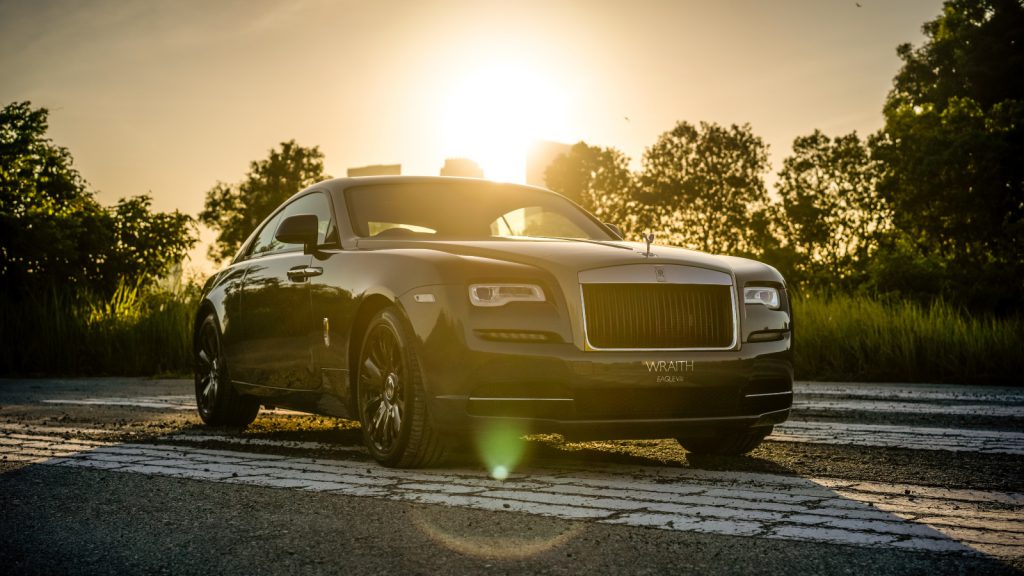Rolls-Royce prides itself on bespoke cars that cater to the specific needs of the individual. But sometimes what one really wants is not something one knows about beforehand. This where the Rolls-Royce Collection comes in – a finely, meticulously crafted work of art that tells a story which is entirely its own. The story that is expressed through the new Collection car, the Wraith Eagle VIII, is one of history-making daring and ambition. It memorialises the tale of Captain John Alcock and Lieutenant Arthur Brown, who made the first non-stop transatlantic flight in 1919 – from St John’s, Newfoundland to Clifden, Ireland. Their vehicle of choice was a Vickers Vimy, a World War I bomber aircraft, powered by two 20.3-litre, 350bhp Rolls-Royce Eagle VIII engines.
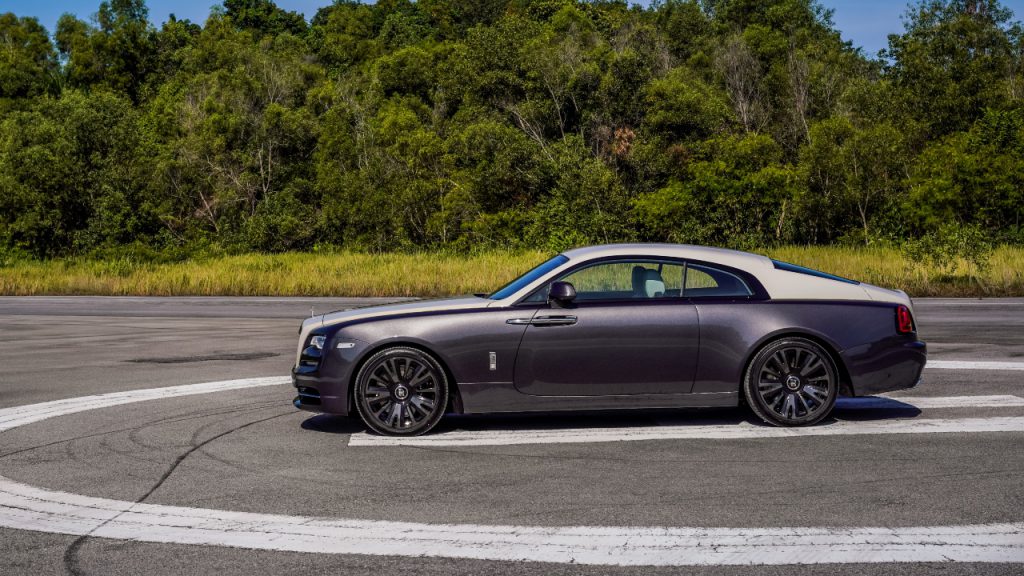
Practically every inch of the Wraith Eagle VIII is inspired by that plane and that 1919 aerial expedition. The exterior of the car is finished in a two-tone gunmetal and dark grey, with a brass accent separating the two colours. This theme continues in the interior, with more brass highlights including the speaker grilles, double-R monograms on the seats, and the plaque that quotes Sir Winston Churchill’s remarks on the expedition: ‘I do not know what we should most admire – their audacity, determination, skill, science, their aeroplane, their Rolls-Royce engines – or their good fortune.’
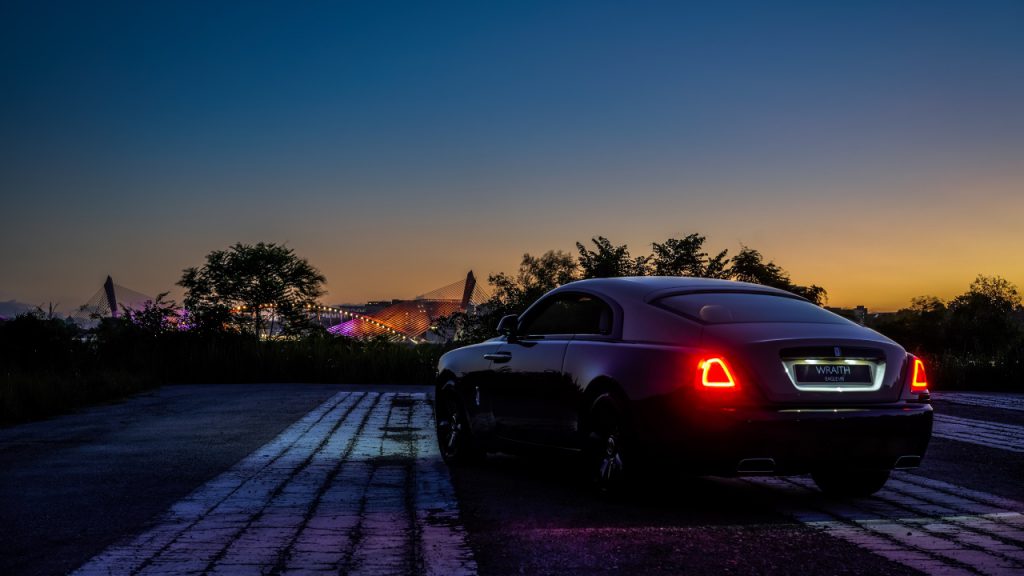
The original flight took nearly 16 hours. In the pitch black of the night, at chilly altitudes of up to 3,700m over the Atlantic Ocean, the pilots found comfort from the green glow of their frozen instruments. The Wraith Eagle VIII harks back to this with its dashboard clock, which has an iced background effect and faint green illumination only visible at night. The clock face is fashioned after a compass, complete with red hour hand, and the expedition’s landing location coordinates are engraved below it.
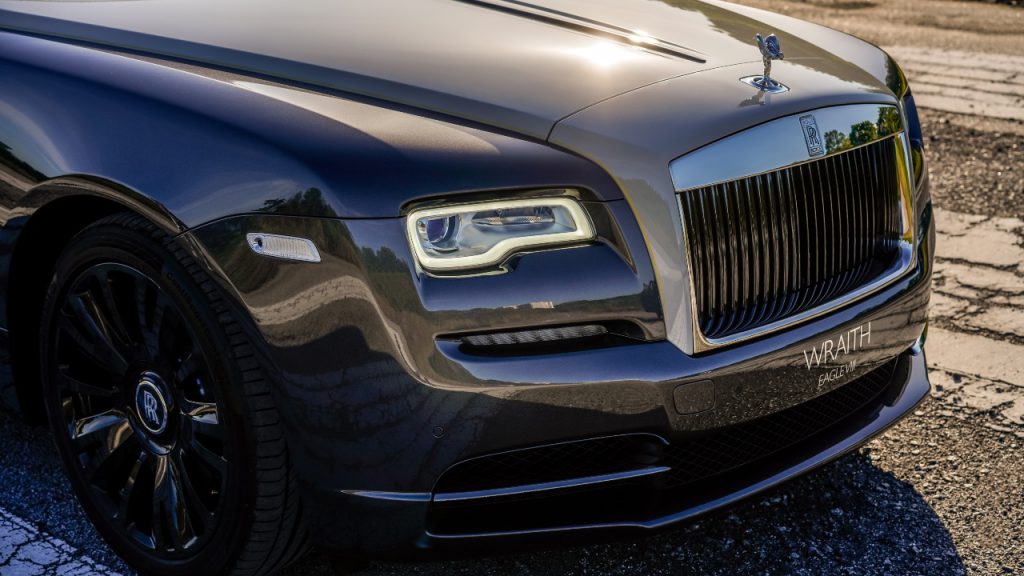
The fascia of the Wraith Eagle VIII is an ambitious design element that articulates the sense of triumph the pilots may have felt as they approached their destination. It is crafted out of smoked eucalyptus wood, shot through with gold, silver and copper patterns that recall the bright lights of a cityscape as seen from high altitude at night.
The most extraordinary feature of the car, however, must be the starlight headliner on the interior roof. A Rolls-Royce signature, the starlight headliner on the Wraith Eagle VIII is consists of 1,183 fibre optic elements that show the stars as they would have been on the exact night of the historical flight. The flight path is charted, and constellations marked, through brass threading, and embroidered clouds lend additional atmosphere. A single red light marks the point at which the pilots broke through the thick fog that had plagued the early part of their journey and were finally able to navigate by the stars.
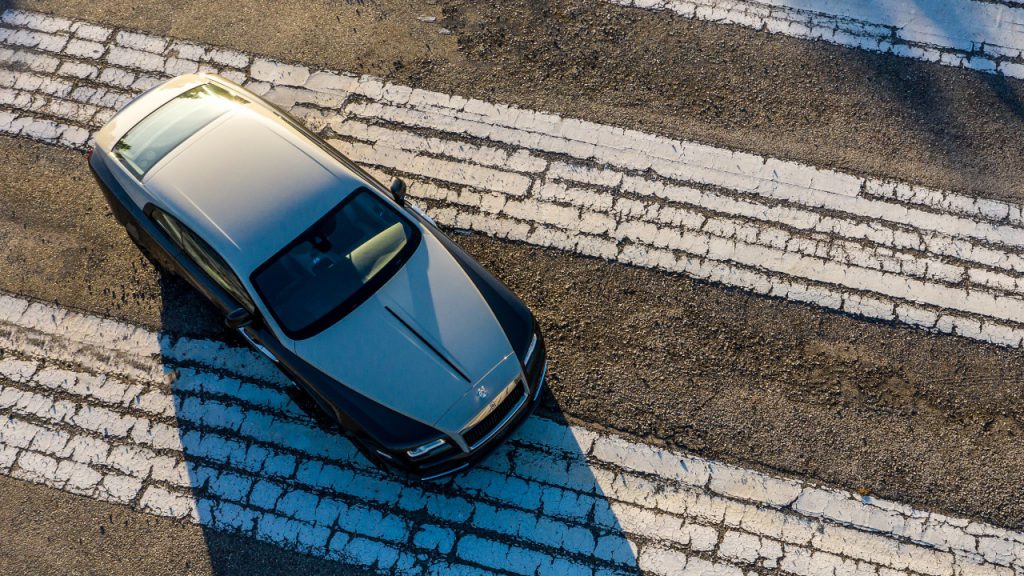
“This is the niche within the niche. Collection cars offer something quite unique,” says Matthew Danton, who was part of the Rolls-Royce Design Team that worked on the Wraith Eagle VIII. “We have lots of great stories that we want to tell, and a lot of the time it’s finding the right moment.” The right moment came along with the 100th anniversary of the historic occasion and with the Wraith, which was the definitive Rolls-Royce platform for this story – a driver-focussed car, one of adventure and seizing the day, with a cockpit-like feel to its cabin.
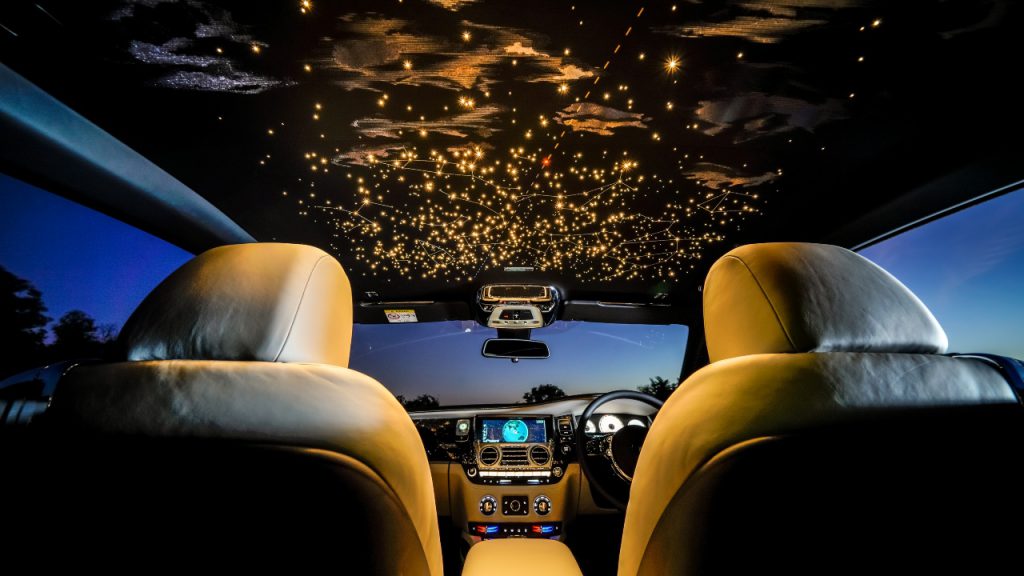
The earliest stages of any Collection project involves extensive research, and Danton was fortunately able to visit the Science Museum in London, which houses the very plane that Alcock and Brown flew – as well as one of the two original engines. This was particularly helpful in deciding the final colour scheme of the Wraith Eagle VIII, as otherwise the only photos available of the craft were in black and white. The entire process took about two years to realise, with Danton and his colleagues working closely with the master craftspeople of the Rolls-Royce workshops. “It’s leather, wood, paint, lots of fine detailing through the car,” Danton says. “[It takes] a great amount of time to really refine it to the kind of standard we expect.”
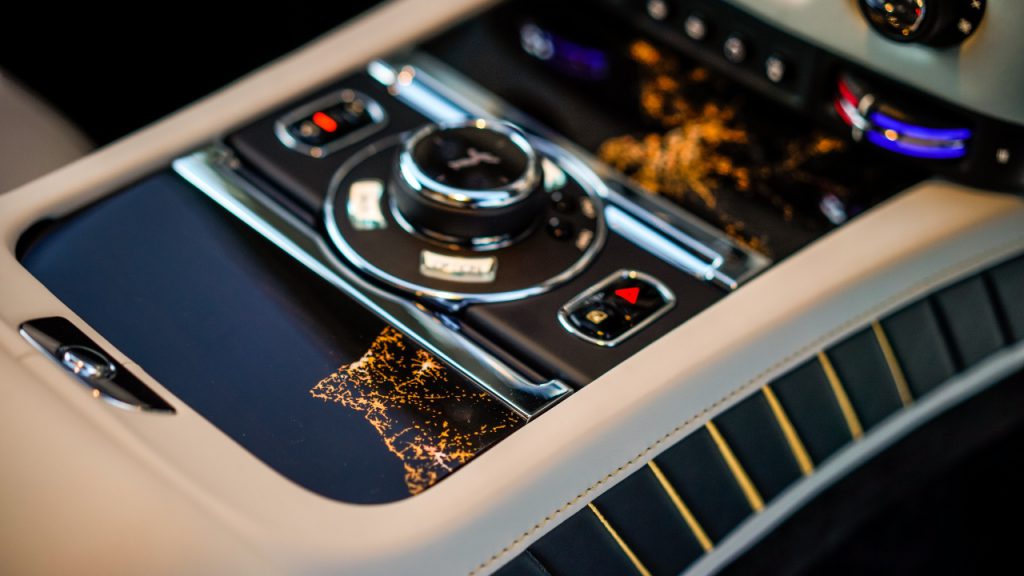
The results are not just closely tied to history, but also have a dark, moody demeanour that he feels makes it appealing to the contemporary customer. But ultimately, the ones who fall in love with a Collection car are the ones who fall for the story. “When you introduce them to the car, and show them stuff like the starlight headliner, and tell them little stories as you go around the interior – little touchpoints like the clock, and the details on the doors, details on the fascia… they really become invested in this story,” he says. “And the stories themselves are universal stories of adventure and endeavour and its like, which I think appeals to everyone.” As it is, the Wraith Eagle VIII is limited to only 50 units worldwide, and the single example reserved for Malaysia has already been spoken for.
